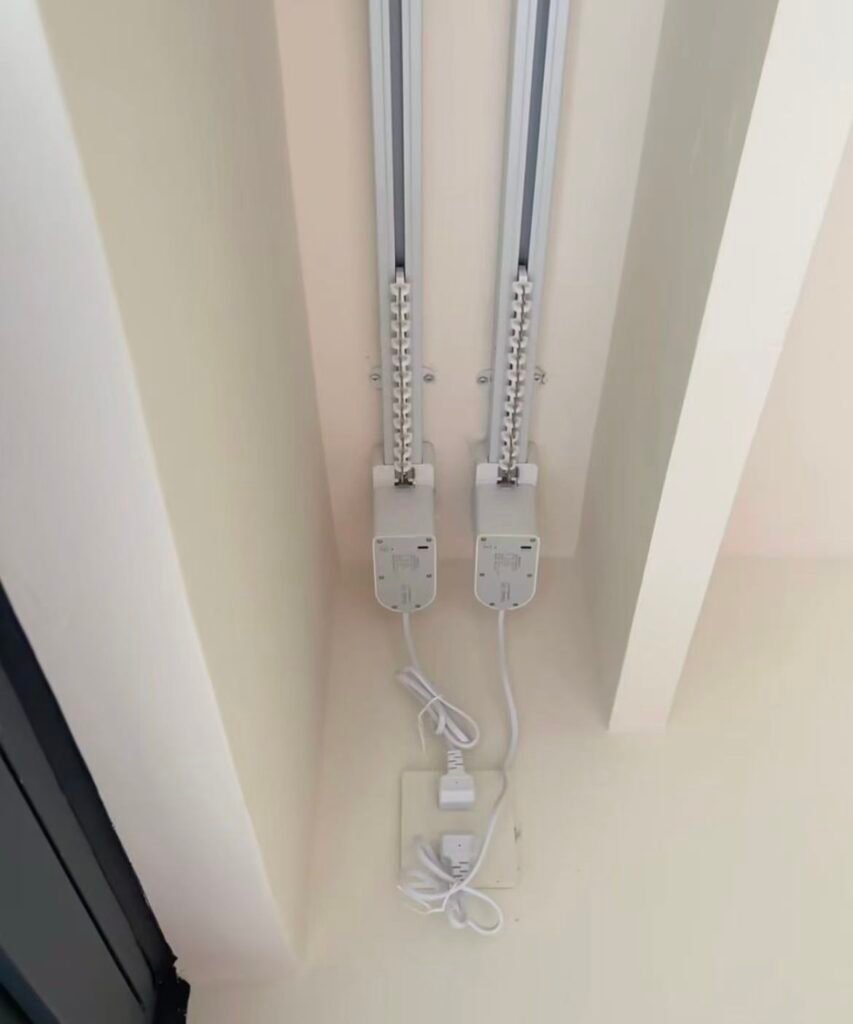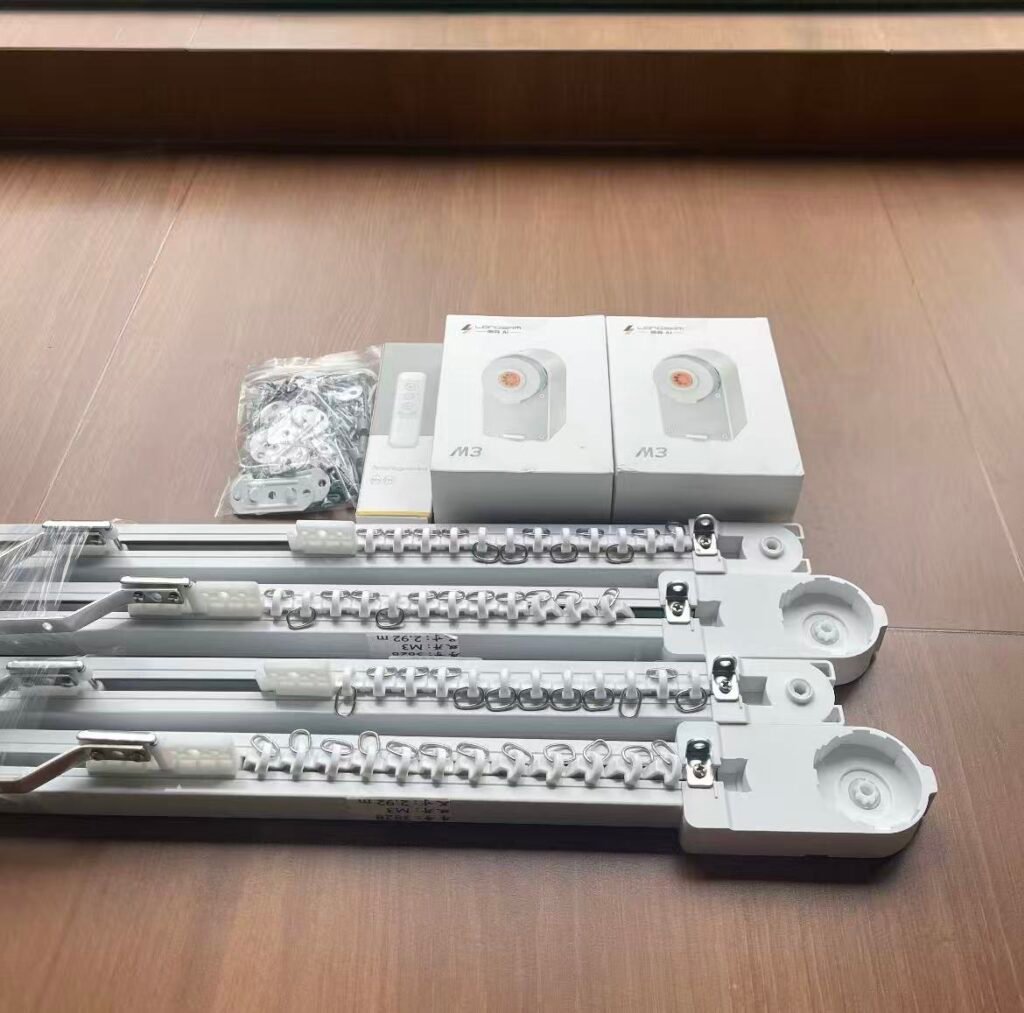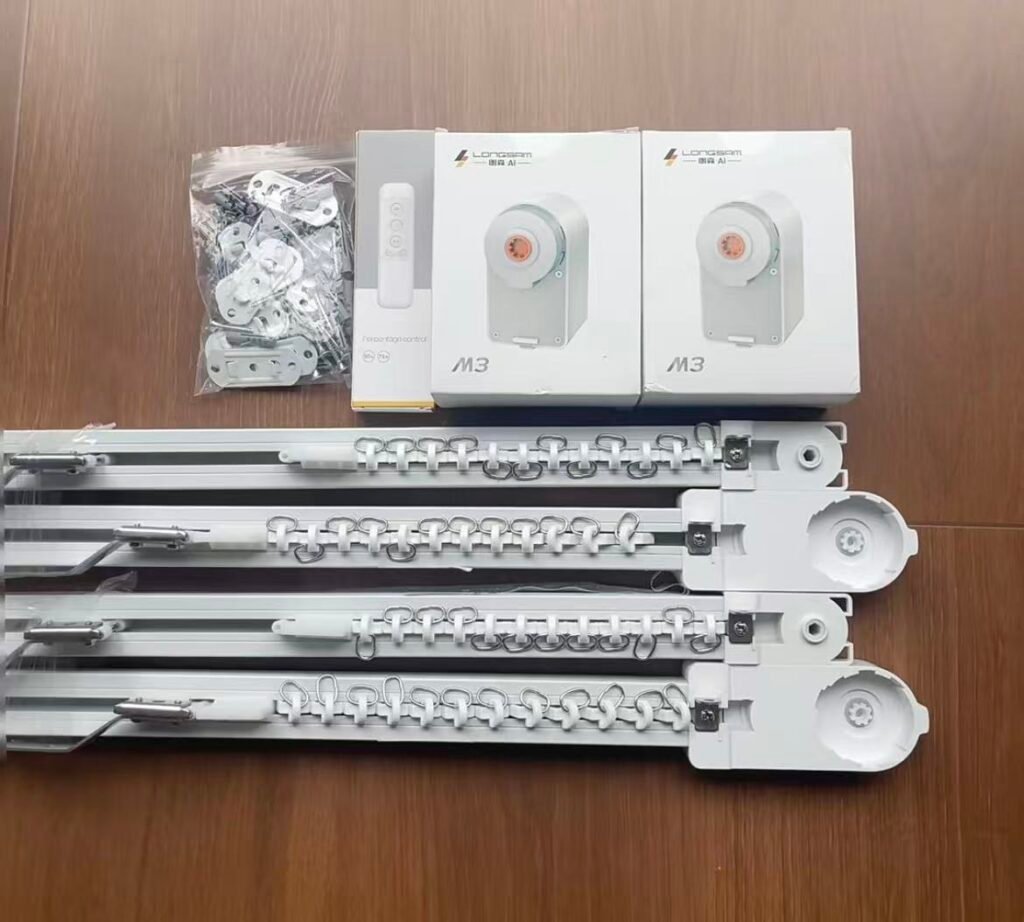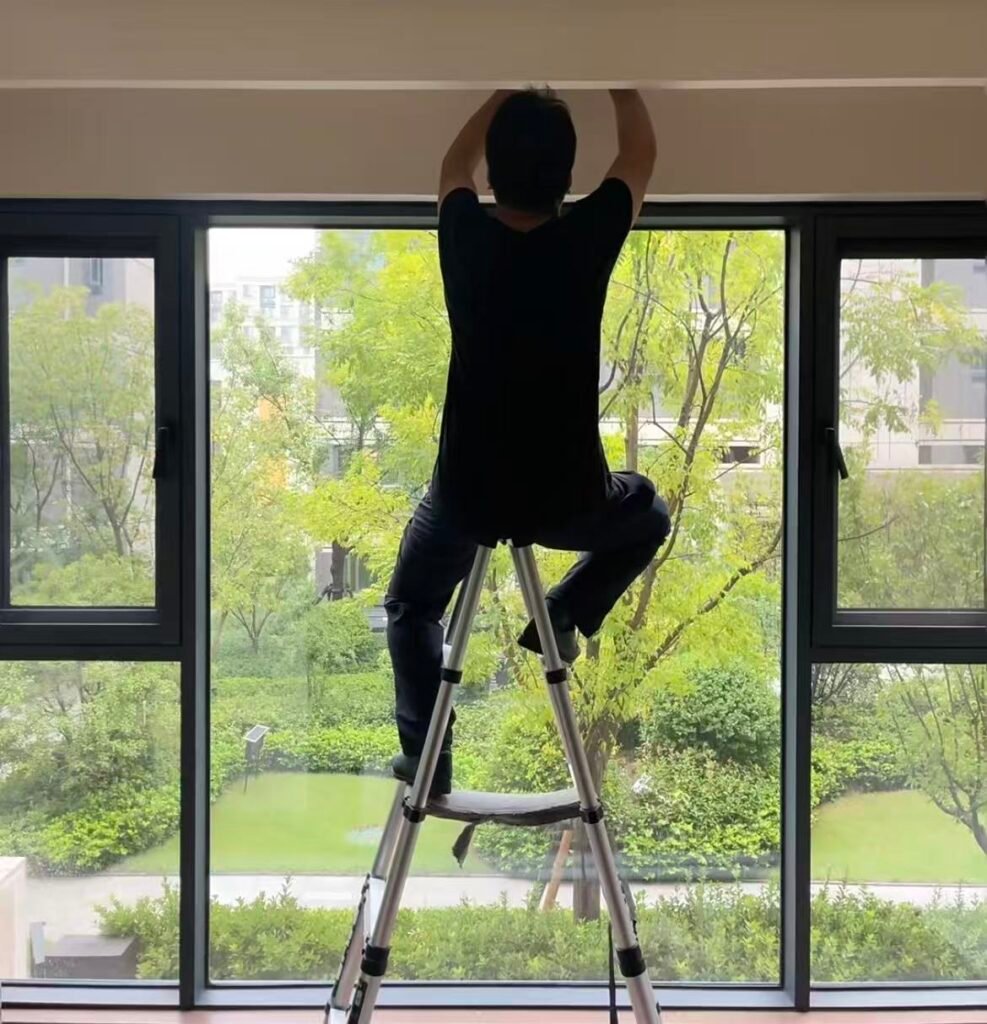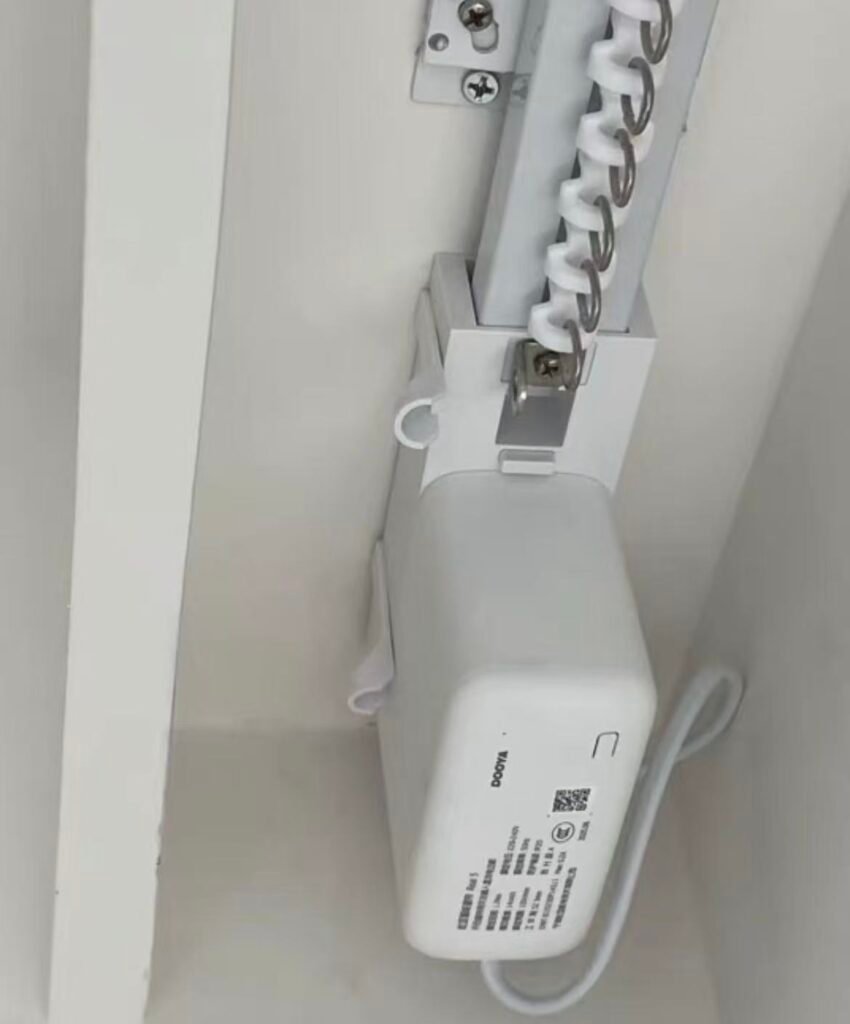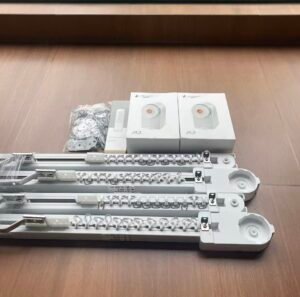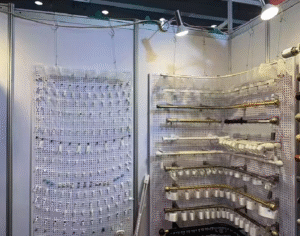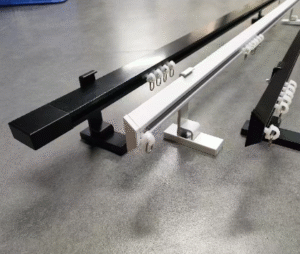I remember my first big project with motorized tracks. The system failed to sync with the home automation. It cost me days to fix. You don't want that hassle.
Motorized curtain tracks enhance smart homes by automating light control. Pick tracks with quiet motors, strong builds, and app integration for easy use and reliability.
I've sourced tracks for years from my factory in China. We serve buyers worldwide. The right choice boosts your projects. Let's dive into key questions to guide you.
What Types of Motorized Tracks Fit Your Smart Home Setup?
Wrong track types lead to mismatched installs. I once picked a basic model for a luxury villa. It couldn't handle the heavy drapes.
Motorized tracks come in ceiling-mount, wall-mount, and recessed types. Choose based on window size and curtain weight. Ceiling-mount works best for wide spans in modern homes.
Understanding Track Configurations
Track types matter for your setup. Ceiling-mount tracks hide well in smart homes. They suit open-plan spaces. Wall-mount tracks fit smaller windows. Recessed tracks blend into ceilings for a sleek look. I recall a U.S. builder who needed recessed tracks for a high-end condo. Our aluminum models installed flush and ran smooth. Always check the track's bend radius if curves are needed. Straight tracks are simplest for beginners.
Weight and Speed Capacities
Each type handles different loads. Light tracks manage sheer curtains up to 20 kg. Heavy-duty ones take velvet drapes over 50 kg. Speed varies too—slow for gentle opens, fast for quick adjustments. In one project, a brand client wanted 20 cm per second for hotel rooms. We customized motors to match. Test compatibility with your fabrics early.
| Track Type | Best For | Max Weight | Speed Range |
|---|---|---|---|
| Ceiling-Mount | Wide Windows | 50 kg | 10-25 cm/s |
| Wall-Mount | Standard Windows | 30 kg | 15-20 cm/s |
| Recessed | Sleek Modern Designs | 40 kg | 12-22 cm/s |
This table helps buyers compare fast. It saves time in sourcing decisions.
How Can You Ensure Seamless Smart Home Integration?
Integration fails break the smart flow. I dealt with a system that wouldn't link to Alexa. Clients were frustrated.
Ensure integration by picking tracks with Wi-Fi or Zigbee support. Check app compatibility with Google Home, Alexa, or Apple HomeKit for voice control and scheduling.
Protocol Compatibility Basics
Smart integration starts with protocols. Wi-Fi tracks connect direct to routers. Zigbee needs a hub but saves bandwidth. Z-Wave offers strong range for big homes. I sourced Zigbee tracks for a European intermediary last year. They synced perfect with Philips Hue lights. Always verify firmware updates. Outdated software causes glitches.
Control Options and Security
Controls include apps, remotes, and voices. Apps let you set sunrise schedules. Voice commands add ease. Security matters—look for encrypted connections to block hacks. In a recent build, we added two-factor auth to tracks. It gave the architect peace of mind. Test multi-device links before full install.
| Protocol | Hub Needed? | Best For | Security Level |
|---|---|---|---|
| Wi-Fi | No | Simple Setups | High (Encryption) |
| Zigbee | Yes | Energy-Efficient | Medium-High |
| Z-Wave | Yes | Large Homes | High |
This chart guides your protocol pick. It matches needs to tech.
Which Materials Offer the Best Durability and Style?
Poor materials wear out fast. I saw steel tracks rust in a humid climate project. Replacements hurt budgets.
Aluminum and stainless steel provide top durability. Aluminum is lightweight and rust-proof. Steel handles heavy loads with a modern finish for stylish smart homes.
Material Strengths and Weaknesses
Materials affect long life and looks. Aluminum resists corrosion well. It's light for easy install. Stainless steel takes abuse in busy homes. Powder-coated finishes add color options. I once supplied brushed nickel tracks to a U.S. brand. They matched chrome fixtures perfect. Avoid plastic for heavy use—it cracks.
Finish and Maintenance Tips
Finishes boost style. Matte black suits industrial vibes. White blends in minimal spaces. Clean tracks monthly with soft cloths. Lubricate gliders yearly for quiet runs. Our factory tests materials in salt sprays. This ensures overseas shipments arrive ready.
| Material | Durability | Weight | Style Options | Maintenance |
|---|---|---|---|---|
| Aluminum | High | Light | Anodized, Painted | Low |
| Stainless Steel | Very High | Medium | Brushed, Polished | Medium |
| Steel (Coated) | High | Heavy | Powder-Coated | Low |
Use this table to weigh pros. It helps balance form and function.
How Do Speed, Noise, and Power Affect Your Choice?
Slow or noisy tracks annoy users. A loud motor woke a family in my early test install. They demanded quiet replacements.
Speed at 15-20 cm/s suits most homes. Noise under 45 dB keeps peace. Power from 12V DC motors ensures reliable runs without overloads.
Balancing Speed and Noise
Speed controls how fast curtains move. 10 cm/s is gentle for silks. 25 cm/s fits quick hotel needs. Noise comes from motors—brushless ones stay quiet. I upgraded to DC motors for a builder client. Noise dropped to whispers. Measure room acoustics first.
Power Sources and Efficiency
Power options include batteries or plugs. Rechargeable batteries1 last months. Wired saves recharges. Efficiency cuts energy bills. Solar add-ons work in sunny spots. We engineered low-voltage motors2 for a green project. They ran cool and saved power.
| Feature | Ideal Range | Impact on Use | Power Type |
|---|---|---|---|
| Speed | 15-20 cm/s | Comfort vs. Speed | DC Motor |
| Noise | <45 dB | Quiet Living | Brushless |
| Power | 12-24V | Reliability | Battery/Wired |
This summary aids quick checks. It ties features to daily life.
Conclusion
Smart motorized tracks transform homes. Focus on types, integration, materials, and performance. Partner with reliable factories like ours for success.
